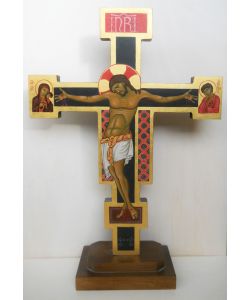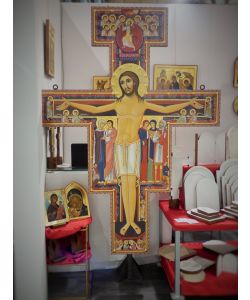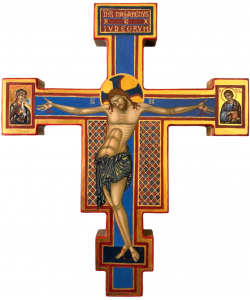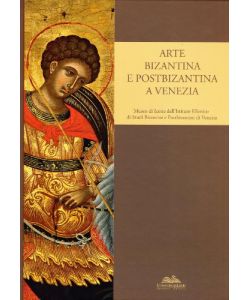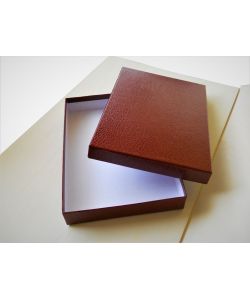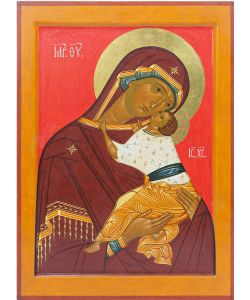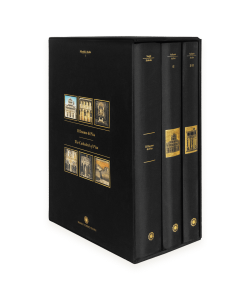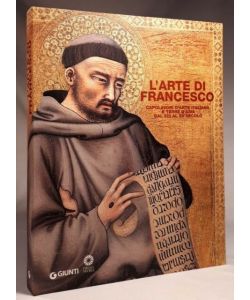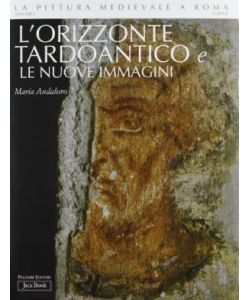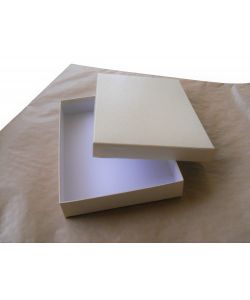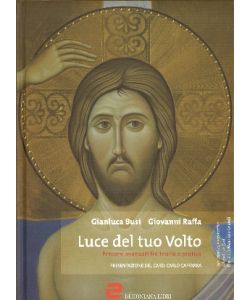Cross
The Technique
Today, as in the past, the icons are written using the same natural materials: wood, canvas, plaster, rabbit glue, powder colors - natural earth and precious stones -, egg yolk, wine, gold leaf. These were the elements that made up ancient painting, both in the East and in the West. Currently this technique is being rediscovered thanks to the oriental masters who have made themselves available to teach what their tradition has always preserved and handed down.
The importance of the recovery of ancient techniques derives from two fundamental meanings: first, that all materials have a symbolic meaning, which would be missing if they were replaced with modern products; secondly, that even from a technical point of view the potential of these materials cannot be obtained with other products, most of the times synthetic, therefore devoid of life and light.
These are essentially the reasons why the ancient art of icons showed us, after the restorations of the last half century, masterpieces still intact as they were when they were painted. The goodness of the ingredients used has allowed these paintings to last for centuries and to keep the materialized light present in them unaltered.
PHASES:
On the gessoed background the drawing is traced which is subsequently engraved with a point to delimit the spaces to be gilded.
Then proceed with the gilding, which can be carried out in various ways: using the bolus gilding or mission method. The gilding has a decorative and even symbolic function: gold symbolizes the uncreated light of God.
The color is applied with the technique called 'of the clearings', which consists of the overlapping of more colors, proceeding from the darker shades to the lighter ones. The shapes are so modeled by light and not by shadow, as is the case for Renaissance European painting. For painting, soft and elastic squirrel or marten brushes are used. First the background colors are spread out in the darkest shade and then we move on to "highlighting", that is to say, increasingly limited areas are lightened, so as to create the sense of volume, as if everything were illuminated from within.
The materials used come from the animal, vegetable and mineral world. The pigments are earths and ochres or minerals such as malachite, lapis lazuli, cinnabar, dioptase, azurite etc. The emulsion with which the colors dissolve is composed of egg yolk, white wine and lavender essence.
The light accentuates the important points that must stand out according to a theological meaning, and signify the transcendence of the represented character, who himself transmits the light, and does not receive it from the outside as in the depictions of Western art.
When the work is completed, the name of the character or episode that the icon represents is written. The inscriptions on the icons are usually in one of the traditional liturgical languages of the Church: Greek, Latin, but also in the current Italian language etc. The generally red border of the icon represents the boundary between the heavenly world and the earthly world.
The last operation consists in the final painting to protect the painting.
But all this work is not enough for a true icon: without the blessing we would simply have a piece of painted wood. The Church's blessing declares that what is visible in the icon is really present and makes it an effective vehicle of divine grace.
